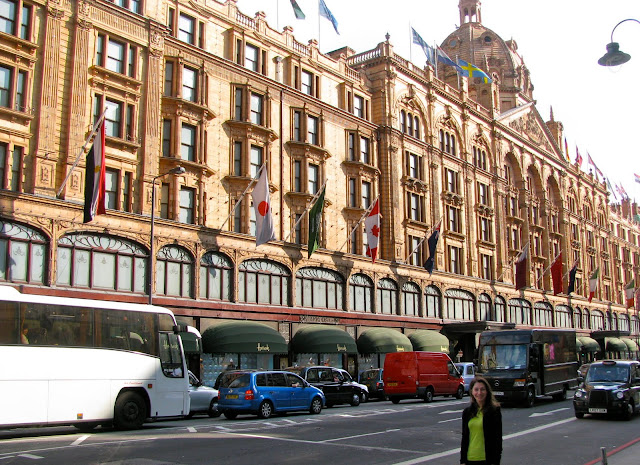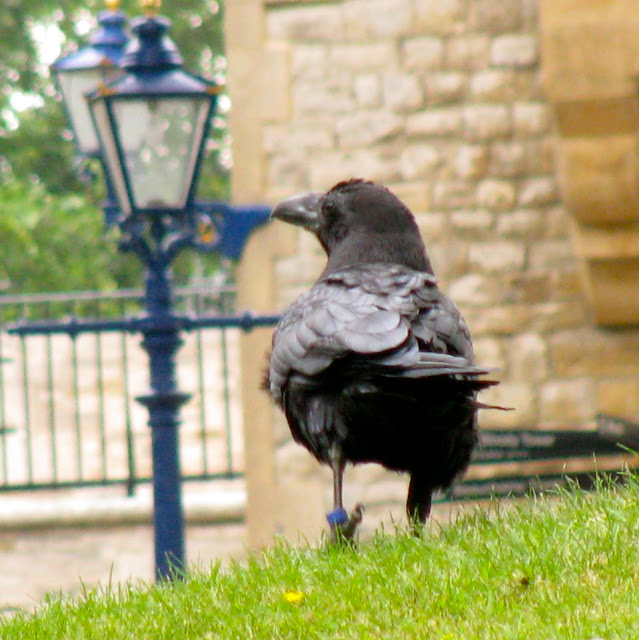Paris is the world's most seductive city, a sensory feast with art, beauty and romance everywhere. Perfect for us. Parisians believe they have savoir-vivre - the art of knowing how to live well. We agree and think you will too after viewing this post.
We arrive on the Place des Vosges in the heart of the Marais district where Tim treats his bride to a stay at the discreetly luxurious historic residence of The Pavillon de la Reine. Let the honeymoon continue!
The view of the rose garden from our breakfast table.
We set out for a day of sightseeing from the Place des Vosges.

Inaugurated in 1612 it is an ensemble of 36 symmetrical houses with ground-floor arcades arranged around a large square.

We wander the charming streets of the Île St-Louis, home to a number of upmarket art galleries, boutiques and the Baroque Eglise St-Louis en I'lle with its colourful stained glass windows (above).

We warned you it was a city for lovers and what can conjure up feelings of amour more than a romantic boat cruise down the River Seine?
We mosey down the Champs-Élysées to The Arc de Triomphe, commissioned in 1806 by Napoleon to commemorate his imperial victories. It remained unfinished when he started losing - first battles and then whole wars and was finally completed in 1836.
For people-watching on the Champs-Élysées, Fouquets Brasserie is definitely the see-and-be-seen circuit. It's been collecting anecdotes and a patina since it was founded in 1901.
A celebrity favourite, it has attracted the likes of Chaplin, Chevalier, Dietrich, Churchill, Roosevelt, Jackie Onassis, May the Beaver, and Sandi and Tim.

Sandi in Place Vendome. Oui, oui, she's sporting an Hermès bag containing a gorgeous scarf, a gift from Tim.
When the weather is warm Parsians of all ages flock to the formal terraces and chestnut groves of the Jardin du Luxembourg to read, relax and romance.
A glimpse of The Pantheon from the gardens.
Sandi, pale from all the walking, is in need of a cafe grand crème et pain au chocolat.
Fait accompli. Parisian life evolves around brasseries where people pause for refreshment and conversation. It's rare to see anyone on a cell phone or laptop in Paris. We think they're on to something.
A superb example of 18th century neo-classicism, the domed Pantheon was commissioned by Louis XV around 1750.
Today God has been evicted in favour of Victor Hugo, Voltaire and other famous, permanent residents resting in the crypt.
We climb the 203 stairs to the top and are rewarded with a birds eye view of the city.
Like this one of Notre Dame Cathedral.
Time for a glass of champagne and more people-watching at Place Mouffetard.

If you've been to Paris you probably know Ladurée.

If you don't, you should. It is a luxury patissiere founded in 1862 famous for its macaroons, 15,000 of which are sold daily. Need we say more?
It's getting dark and that means only one thing... le dîner!
We head back to the Marais for a sumptuous dinner in sumptuous surroundings. Bofinger, founded in 1864, is reputedly the oldest brasserie in Paris.
After a good night's sleep we make our way to Père Lachaise, the world's most visited cemetery. Its 69,000 ornate, even ostentatious tombs of the rich and/or famous include Jim Morrison (above), Chopin, Balzac, Proust, Colette, Sarah Bernhardt, Yves Montand, Edith Piaf, Isadora Duncan and even the immortal 12th century lovers, Abélard and Heloïse.
Oscar Wilde is apparently as flamboyant in death as he was in life as he still attracts admirers who plaster his ornate tomb with indelible lipstick kisses. The problem has become so serious (and expensive) that authorities have asked a major cosmetic company to pay for a cleanup.
Over in division 2 there are more grave concerns. According to legend, a woman who strokes the amply filled crotch of Victor Noir's prostrate bronze effigy will quickly become pregnant. Some would-be mothers are rubbing a bit too enthusiastically and the larger-than-life-size package is being worn down.


La Tour Eiffel or the 'metal asparagus' as some Parisians snidely called it, was almost torn down in 1909 but was spared because it proved an ideal platform for the transmitting antennas needed for the newfangled science of radiotelegraphy. The rest, of course, is history.
May, the Canadian beaver, says, "Bonjour Sadie, à bientôt"!
May, the Canadian beaver, says, "Bonjour Sadie, à bientôt"!
We warned you it was a city for lovers and what can conjure up feelings of amour more than a romantic boat cruise down the River Seine?
We mosey down the Champs-Élysées to The Arc de Triomphe, commissioned in 1806 by Napoleon to commemorate his imperial victories. It remained unfinished when he started losing - first battles and then whole wars and was finally completed in 1836.
For people-watching on the Champs-Élysées, Fouquets Brasserie is definitely the see-and-be-seen circuit. It's been collecting anecdotes and a patina since it was founded in 1901.
A celebrity favourite, it has attracted the likes of Chaplin, Chevalier, Dietrich, Churchill, Roosevelt, Jackie Onassis, May the Beaver, and Sandi and Tim.

Sandi in Place Vendome. Oui, oui, she's sporting an Hermès bag containing a gorgeous scarf, a gift from Tim.
The Musée D'Orsay, in a former train station, displays France's national collection of paintings, sculptures, and objets d'art. We see masterpieces by Monet, Seurat, Degas, Van Gogh, Cézanne, Matisse and Renoir's famous Le Moulin de la Galette (above).
The Romanesque church of St Germain des Près is the oldest in Paris, built in the 11th century on the site of a 6th century abbey.
It was the dominant church in Paris until the arrival of Notre Dame.
The Romanesque church of St Germain des Près is the oldest in Paris, built in the 11th century on the site of a 6th century abbey.
It was the dominant church in Paris until the arrival of Notre Dame.
When the weather is warm Parsians of all ages flock to the formal terraces and chestnut groves of the Jardin du Luxembourg to read, relax and romance.
A glimpse of The Pantheon from the gardens.
Sandi, pale from all the walking, is in need of a cafe grand crème et pain au chocolat.
Fait accompli. Parisian life evolves around brasseries where people pause for refreshment and conversation. It's rare to see anyone on a cell phone or laptop in Paris. We think they're on to something.
A superb example of 18th century neo-classicism, the domed Pantheon was commissioned by Louis XV around 1750.
Today God has been evicted in favour of Victor Hugo, Voltaire and other famous, permanent residents resting in the crypt.
We climb the 203 stairs to the top and are rewarded with a birds eye view of the city.
Like this one of Notre Dame Cathedral.
Time for a glass of champagne and more people-watching at Place Mouffetard.

If you've been to Paris you probably know Ladurée.

If you don't, you should. It is a luxury patissiere founded in 1862 famous for its macaroons, 15,000 of which are sold daily. Need we say more?
It's getting dark and that means only one thing... le dîner!
We head back to the Marais for a sumptuous dinner in sumptuous surroundings. Bofinger, founded in 1864, is reputedly the oldest brasserie in Paris.
After a good night's sleep we make our way to Père Lachaise, the world's most visited cemetery. Its 69,000 ornate, even ostentatious tombs of the rich and/or famous include Jim Morrison (above), Chopin, Balzac, Proust, Colette, Sarah Bernhardt, Yves Montand, Edith Piaf, Isadora Duncan and even the immortal 12th century lovers, Abélard and Heloïse.
Oscar Wilde is apparently as flamboyant in death as he was in life as he still attracts admirers who plaster his ornate tomb with indelible lipstick kisses. The problem has become so serious (and expensive) that authorities have asked a major cosmetic company to pay for a cleanup.
Over in division 2 there are more grave concerns. According to legend, a woman who strokes the amply filled crotch of Victor Noir's prostrate bronze effigy will quickly become pregnant. Some would-be mothers are rubbing a bit too enthusiastically and the larger-than-life-size package is being worn down.
Sandi's still on the hunt for shoes and it might take a while so we end appropriately where we began, at another grand magasin, Galeries Lafayette.

Like a good meal Paris excites, satisfies and the memory lingers. We'll dine out on our memories for a long time to come. Santé Paris!




























































